Since Donald Trump regained the presidency, he has coveted Greenland. Trump has insisted that the U.S. will control the island, currently an autonomous territory of Denmark, and if his overtures are rejected, perhaps seize Greenland by force.
During a recent congressional hearing, senators and expert witnesses focused on Greenland’s strategic value and its natural resources: critical minerals, fossil fuels and hydropower. No one mentioned the hazards, many of them exacerbated by human-induced climate change, that those longing to possess and develop the island will inevitably encounter.
That’s imprudent, because the Arctic’s climate is changing more rapidly than anywhere on Earth. Such rapid warming further increases the already substantial economic and personal risk for those living, working and extracting resources on Greenland, and for the rest of the planet.
Arctic Report Card 2024, NOAA Climate.gov
I am a geoscientist who studies the environmental history of Greenland and its ice sheet, including natural hazards and climate change. That knowledge is essential for understanding the risks that military and extractive efforts face on Greenland today and in the future.
Greenland: Land of extremes
Greenland is unlike where most people live. The climate is frigid. For much of the year, sea ice clings to the coast, making it inaccessible.
An ice sheet, up to 2 miles thick, covers more than 80% of the island. The population, about 56,000 people, lives along the island’s steep, rocky coastline.
While researching my book “When the Ice is Gone,” I discovered how Greenland’s harsh climate and vast wilderness stymied past colonial endeavors. During World War II, dozens of U.S. military pilots, disoriented by thick fog and running out of fuel, crashed onto the ice sheet. An iceberg from Greenland sunk the Titanic in 1912, and 46 years later, another sunk a Danish vessel specifically designed to fend off ice, killing all 95 aboard.
Now amplified by climate change, natural hazards make resource extraction and military endeavors in Greenland uncertain, expensive and potentially deadly.
Rock on the move
Greenland’s coastal landscape is prone to rockslides. The hazard arises because the coast is where people live and where rock isn’t hidden under the ice sheet. In some places, that rock contains critical minerals, such as gold, as well as other rare metals used for technology, including for circuit boards and electrical vehicle batteries.
The unstable slopes reflect how the ice sheet eroded the deep fjords when it was larger. Now that the ice has melted, nothing buttresses the near-vertical valley walls, and so, they collapse.
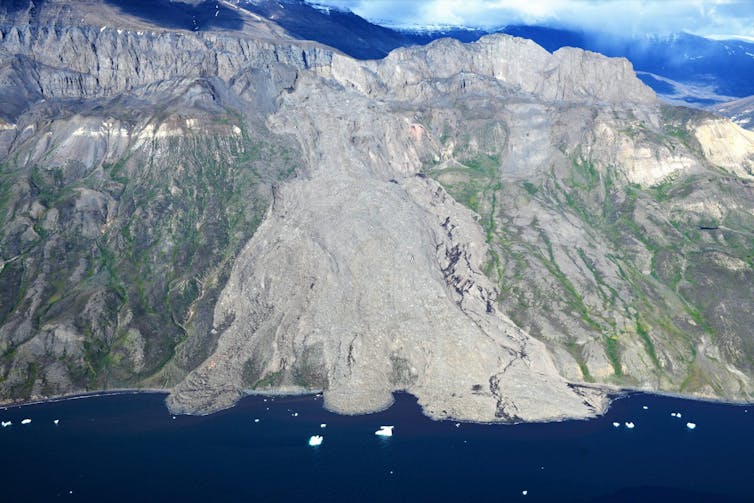
Kristian Svennevig/GEUS
In 2017, a northwestern Greenland mountainside fell 3,000 feet into the deep waters of the fjord below. Moments later, the wave that rockfall generated (a tsunami) washed over the nearby villages of Nuugaatsiaq and Illorsuit. The water, laden with icebergs and sea ice, ripped homes from their foundations as people and sled dogs ran for their lives. By the time it was over, four people were dead and both villages lay in ruin.
Steep fjord walls around the island are littered with the scars of past rockslides. The evidence shows that at one point in the last 10,000 years, one of those slides dropped rock sufficient to fill 3.2 million Olympic swimming pools into the water below. In 2023, another rockslide triggered a tsunami that sloshed back and forth for nine days in a Greenland fjord.
There’s no network of paved roads across Greenland. The only feasible way to move heavy equipment, minerals and fossil fuels would be by sea. Docks, mines and buildings within tens of feet of sea level would be vulnerable to rockslide-induced tsunamis.
Melting ice will be deadly and expensive
Human-induced global warming, driven by fossil fuel combustion, speeds the melting of Greenland’s ice. That melting is threatening the island’s infrastructure and the lifestyles of native people, who over millennia have adapted their transportation and food systems to the presence of snow and ice. Record floods, fed by warmth-induced melting of the ice sheet, have recently swept away bridges that stood for half a century.
As the climate warms, permafrost – frozen rock and soil – which underlies the island, thaws. This destabilizes the landscape, weakening steep slopes and damaging critical infrastructure.
Permafrost melt is already threatening the U.S. military base on Greenland. As the ice melts and the ground settles under runways, cracks and craters form – a hazard for airplanes. Buildings tilt as their foundations settle into the softening soil, including critical radar installations that have scanned the skies for missiles and bombers since the 1950s.
Greenland’s icebergs can threaten oil rigs. As the warming climate speeds the flow of Greenland’s glaciers, they calve more icebergs in the ocean. The problem is worse close to Greenland, but some icebergs drift toward Canada, endangering oil rigs there. Ships stand guard, ready to tow threatening icebergs away.
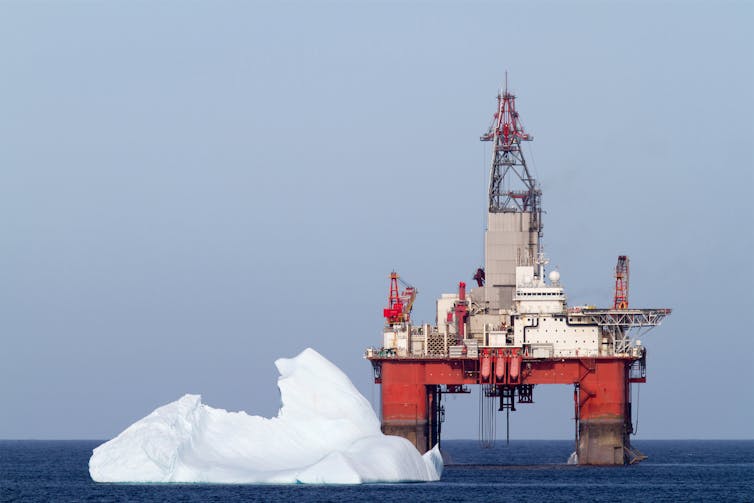
Geoffrey Whiteway/500px Plus via Getty Images
Greenland’s government banned drilling for fossil fuels in 2021 out of concern for the environment. Yet, Trump and his allies remain eager to see exploration resume off the island, despite exceptionally high costs, less than stellar results from initial drilling, and the ever-present risk of icebergs.
As Greenland’s ice melts and water flows into the ocean, sea level changes, but in ways that might not be intuitive. Away from the island, sea level is rising about an inch each six years. But close to the ice sheet, it’s the land that’s rising. Gradually freed of the weight of its ice, the rock beneath Greenland, long depressed by the massive ice sheet, rebounds. That rise is rapid – more than 6 feet per century. Soon, many harbors in Greenland may become too shallow for ship traffic.
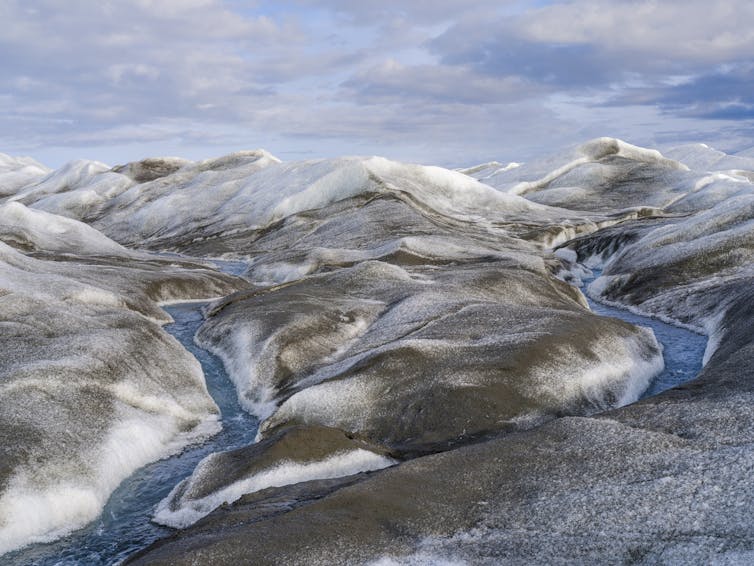
REDA/Universal Images Group via Getty Images
Greenland’s challenging past and future
History clearly shows that many past military and colonial endeavors failed in Greenland because they showed little consideration of the island’s harsh climate and dynamic ice sheet.
Changing climate drove Norse settlers out of Greenland 700 years ago. Explorers trying to cross the ice sheet lost their lives to the cold. American bases built inside the ice sheet, such as Camp Century, were quickly crushed as the encasing snow deformed.
In the past, the American focus in Greenland was on short-term gains with little regard for the future. Abandoned U.S. military bases from World War II, scattered around the island and in need of cleanup, are one example. Forced relocation of Greenlandic Inuit communities during the Cold War is another. I believe that Trump’s demands today for American control of the island to exploit its resources are similarly shortsighted.
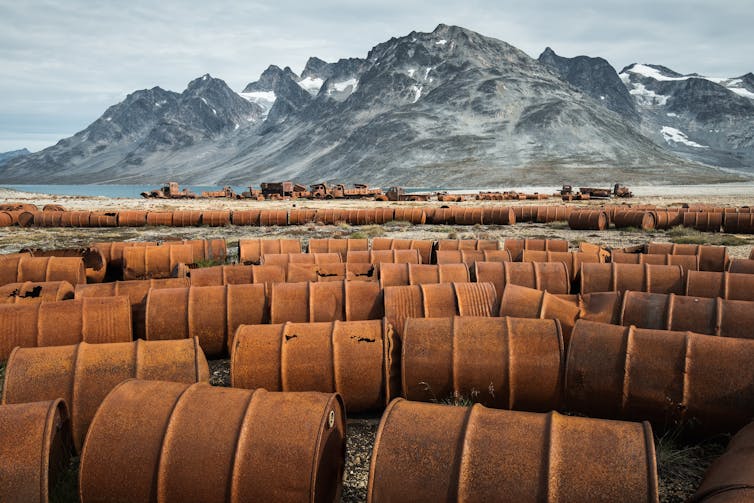
Posnov/Moment via Getty Images
However, when it comes to the planet’s livability, I’ve argued that the greatest strategic and economic value of Greenland to the world is not its location or its natural resources, but its ice. That white snow and ice reflect sunlight, keeping Earth cool. And the ice sheet, perched on land, keeps water out of the ocean. As it melts, Greenland’s ice sheet will raise global sea level, up to about 23 feet when all the ice is gone.
Climate-driven sea level rise is already flooding coastal regions around the world, including major economic centers. As that continues, estimates suggest that the damage will total trillions of dollars. Unless Greenland’s ice remains frozen, coastal inundation will force the largest migration that humanity has ever witnessed. Such changes are predicted to destabilize the global economic and strategic world order.
These examples show that disregarding the risks of natural hazards and climate change in Greenland courts disaster, both locally and globally.
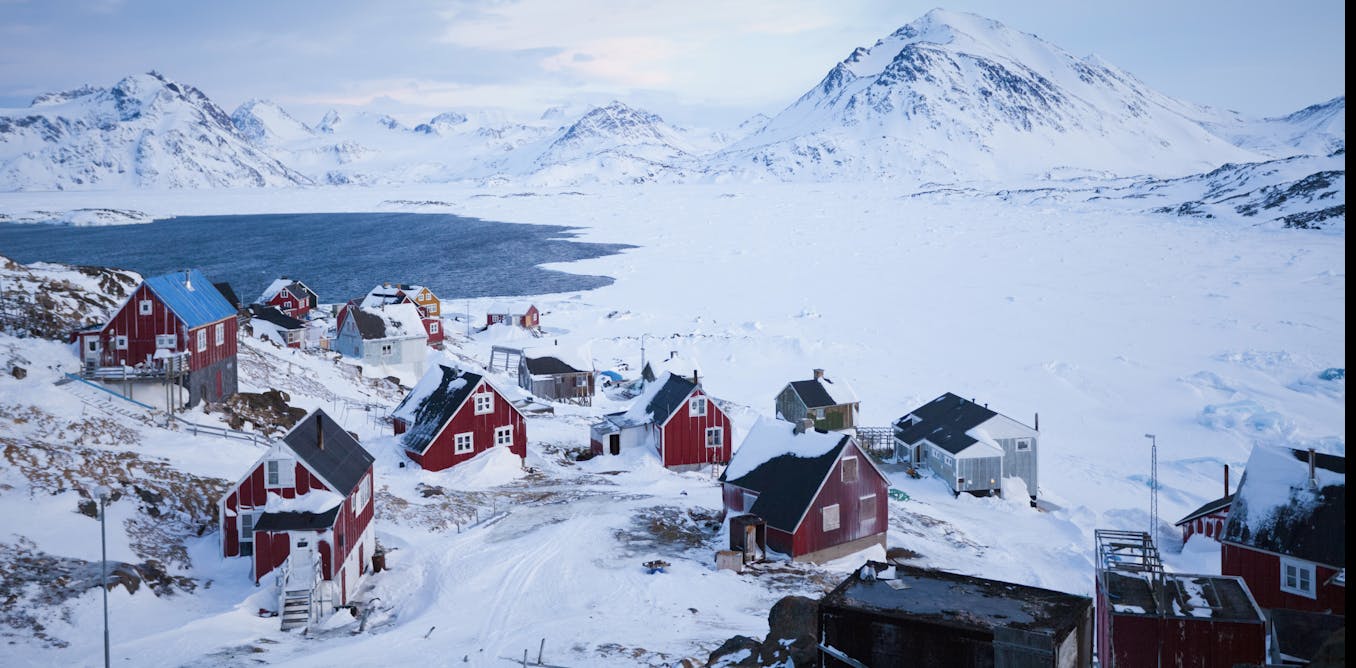
The post “Greenland’s rapidly melting ice and landslide-prone fjords make the oil and minerals Trump covets dangerous to extract” by Paul Bierman, Fellow of the Gund Institute for Environment, Professor of Natural Resources and Environmental Science, University of Vermont was published on 02/19/2025 by theconversation.com










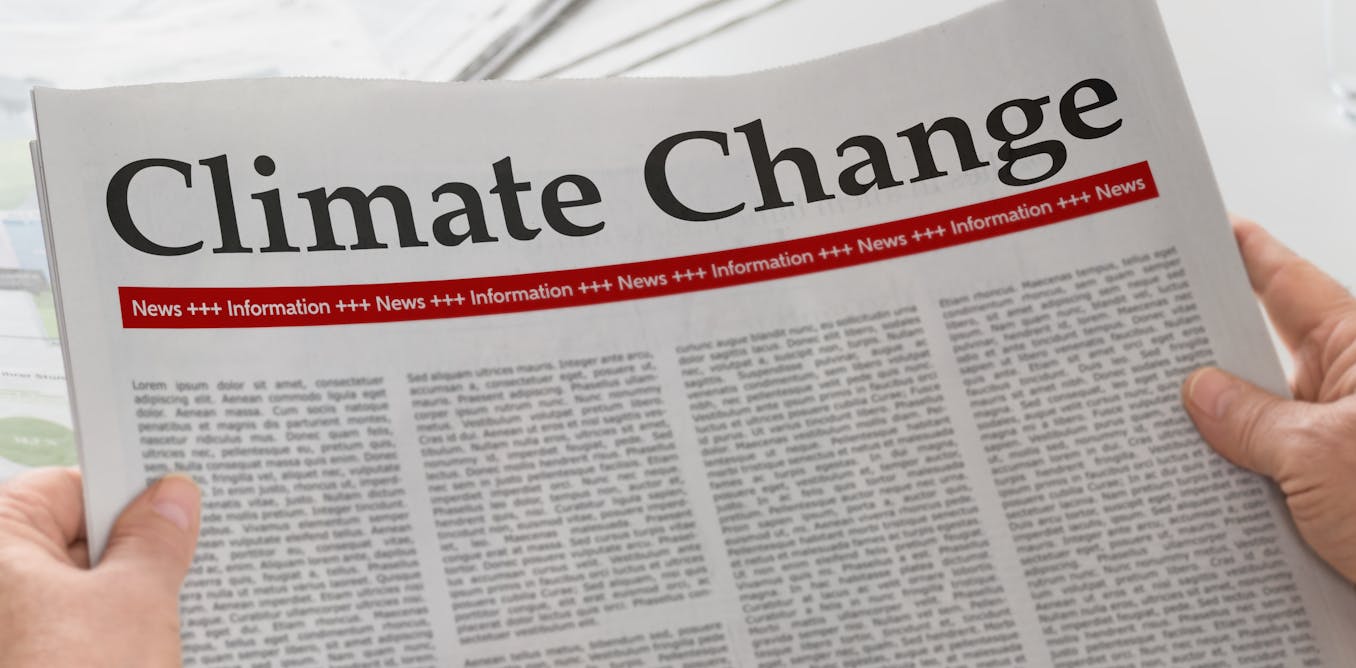




















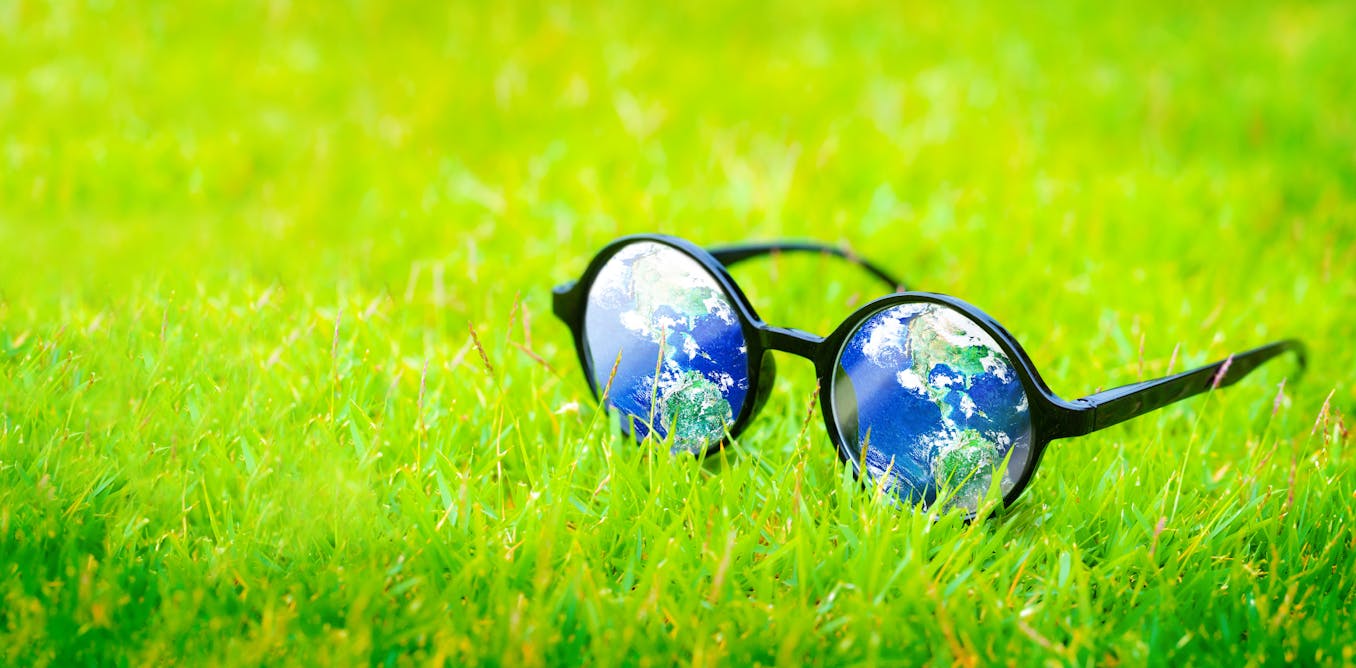


Leave a Reply